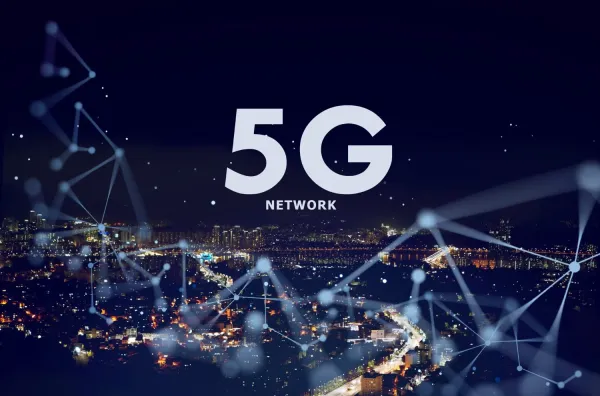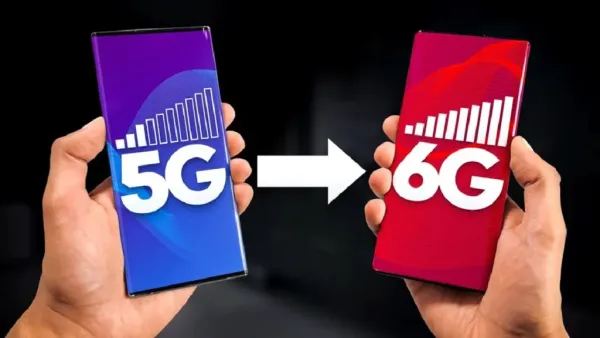- In India, 5G is now widely deployed in Indian cities, offering faster speeds, lower latency, and Fixed Wireless Access as a strong broadband alternative.
- 6G, still in research, promises ultra-fast terahertz connectivity, AI-driven networks, and satellite integration, but remains years away from commercialization.
- For users, the focus should be on adopting 5G-ready devices and watching for gradual 5G Advanced upgrades rather than waiting for 6G.
Headlines in telecom tend to swing between “5G is here” and “6G is coming,” making it difficult for the general reader to sift through hype and reality. For the Indian public, what is essential is a set of straightforward questions: what exactly does 5G bring to the table today, what practical differences will 6G promiseand how should the consumer, small businesses, and institutions think about the near-term future?
India’s mobile market remains one of the largest in the world, with more than a billion wireless subscriptions. Since the initial rollouts in 2022, 5G has moved steadily from trials into broad commercial deployment.

What Indian users experience with 5G now
Major operators have built sizable 5G footprints across many urban and peri-urban centers, and the technology is already being used for Fixed Wireless Access to bring high-speed internet to homes where fiber is not yet available. That means many city-dwellers and suburban households are seeing tangible improvements in speed and latency compared to 4G. At the same time, specific use cases – such as cloud gaming, higher-quality video calls, and reliable streaming – are noticeably better on 5G networks.
But coverage remains uneven
At the same time, however, the rollout is not even. Coverage varies by operator, spectrum band, and geography; in rural and smaller towns, it remains patchy. Real-world performance also depends significantly on which spectrum bands are in play: some deployments focus on low- and mid-band frequencies that offer broader coverage at modest peak speeds. In contrast, more limited mmWave deployments can deliver much faster speeds in dense pockets.
The device ecosystem is mature
The device ecosystem has matured enough that most new mid-range and premium smartphones sold today support 5G, while operators are already discussing further evolutionary updates under the banner of 5G Advanced.
“6G” is primarily a research and standards label for the generation following 5G and its evolutionary steps.
Expected 6G capabilities
Academic papers, white papers from industry, and early discussions about standards describe an ambitious agenda: the use of the terahertz spectrum for dramatically higher peak rates, deeply integrated on-device and edge AI that optimizes networks in real time, built-in sensing capabilities that let the network gather environmental and motion data, and closer integration with satellites and other non-terrestrial networks.
These technologies can enable applications that are nothing short of transformational: immersive AR/VR that feels truly seamless, tactile internet experiences for remote control of machinery, and universal connectivity in remote regions.
Timeline for 6G in India
The practical timeline is long, though. Work on requirements and research continues through the late 2020s, with most observers expecting commercial maturity and mass-market devices toward the end of the decade or early in the 2030s. For India, participation in global research efforts and domestic collaborations can accelerate readiness. Still, large-scale adoption will depend on spectrum policy, regulatory clarity, and substantial investment in infrastructure and affordable devices.
- Research & requirement drafting: 2025–2028
- Early standards & prototypes: 2028–2030
- Commercial networks globally: around 2030–2032
- India-wide adoption: early-to-mid 2030s, depending on spectrum policy and device affordability
Bottom line: 6G is exciting – but it’s not arriving soon.

Advantages of 5G for India
5G’s chief advantage is that it already delivers real, usable benefits. Across many cities and suburban areas, users are experiencing higher median and peak speeds alongside lower latency, which improves video calls, streaming, and interactive services. The growth of 5G FWA is especially relevant for places where fiber deployment is lagging, and operators are using 5G to bring reliable broadband to homes as a practical stopgap or complement to wired options. The market for 5G-capable devices is broad, so consumers and small businesses can adopt current-generation phones and routers without waiting for exotic hardware.
Limitations of 5G
Yet 5G is not uniformly transformative everywhere: coverage gaps persist, especially in rural and smaller towns in India. Labels like “5G” don’t always translate into identical experiences because network performance differs with spectrum allocation and operator configuration. This variability means expectations must be managed: in some locations, the upgrade will feel dramatic, while in others it will be incremental.
Potential Advantages of 6G
Looking ahead, 6G promises far higher data rates and even lower latency, thanks to terahertz bands and AI-driven networks. The idea of integrated sensing alongside communication could enable new public safety, health monitoring, and industrial applications, while deeper satellite integration could finally solve connectivity in the most remote regions.
Challenges for 6G in India
These are tantalizing possibilities, but they come with constraints that matter in a price-sensitive market like India.
Development and standardization will take years; spectrum policy for high-frequency bands will need to be handled with care, and early devices will be costly. Indeed, India’s adoption would lag behind early adopters elsewhere unless manufacturers and policymakers deliberately take action to drive down prices and ensure policy alignment.
Practical Advice for Indian Users (2025)
For general consumers
For those looking for better home broadband today, 5G Fixed Wireless Access is a good solution where it’s available; it often fills gaps in the slow rollout of fiber.
When selecting a new smartphone or a home router, buyers should focus on devices that support 5G and offer good software update policies – the approach that balances future-readiness with cost efficiency and avoids chasing speculative features that belong to a later generation.
For households seeking better broadband
5G FWA is a strong, cost-effective alternative to fiber. Telcos’ 5G Advanced announcements are worth watching because many near-term network improvements will be delivered through software and infrastructure evolution rather than through a separate “6G” upgrade.
For enterprises and institutions
Organizations involved in industrial automation, research, or specialized services should pay closer attention to 6G developments, especially research outputs around terahertz communications, AI-native networking, and integrated sensing.
For policymakers
Policymakers and enterprises will have to plan for spectrum allocation, investment in edge computing, and partnerships with satellite providers to take full advantage of 6G’s potential. For the general public, it would be prudent to treat 6G as an important technological horizon to follow, not as a reason to prematurely replace perfectly functional 5G-capable equipment.
In 2025, 5G is the practical and transformative technology for India. It’s delivering faster speeds, lower latencies, and real home-broadband alternatives through FWA, even as coverage continues to expand.
6G remains an exciting and ambitious research frontier that promises capabilities, such as terahertz radios, AI-native networks, sensing, and satellite integration, that could reshape connectivity.
But those advances take years to standardize, regulate, and deliver affordably. The near-term strategy for most readers is clear:
- Adopt 5G-capable devices as needed
- Consider 5G FWA where fiber is absent.
- Watch for operator rollouts and 5G Advanced upgrades.
- Track 6G developments without feeling compelled to act on them today.
Over the next decade, capabilities will likely be layered rather than abrupt swaps between generations, and sensible, measured choices will make the transition smoother for consumers, businesses, and public services alike.
Contact to : xlf550402@gmail.com
Copyright © boyuanhulian 2020 - 2023. All Right Reserved.